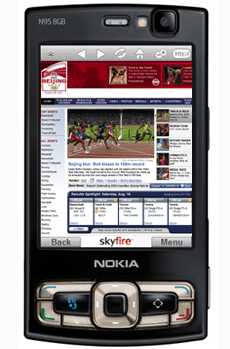 Loading...
Loading...
 Loading...
Loading...

There have been a slew of smartphones in the market for the few years. Phone manufacturers seemed to have marketed their phones as an answer to all the workaday struggles that plague the life of a human being. They check mail, play music, walk the dog, babysit the toddler and invariably replace the best friend. Alright, although we have exaggerated a phone’s place in our lives ever so slightly, the possibility of those functions being added is not precisely the unthinkable and unimaginable concept that it was say a decade ago.
But today we focus on a truly remarkable function of a smartphone, one that we all take very much for granted now: Web browsing.
There was a time, not too long ago, where the very idea of being able to surf the Internet on one’s phone was laughable. Those were the days were WAP was limping its way into the mainstream world, where people still built sites with HTML only and even then phones needed a WAP site to access web pages.
Phone capabilities have skyrocketed, bringing in Java capabilities, and Flash support to our pocket-sized lifelines. The true innovation, though, has come in the form of the sophisticated miniature applications that parse websites with so much apparent ease – mobile web browsers.
1. Opera Mobile: Arguably, the best mobile browser is possibly Opera Mobile, or the free version, Opera Mini. The true charm of Opera products lies in their ability to work with virtually any mobile operating system, and their phenomenal speed. The browsers also have keyboard shortcuts and tabbed browsing, strongly reminiscent of a desktop browsing experience.
2. Skyfire: With a name evocative of extreme swiftness, it is unsurprising that Skyfire delivers speed. The approach taken here is analogous to the concept of a thin client. The web pages are parsed on a separate server, before being downloaded to the mobile phone in question. Therefore the processor of the device remains untaxed, with the result of enhancing user experience throughout.
3. Nokia S60 Web Browser: There is a vintage charm to the Nokia browser, as Symbian is an old a mobile operating system as they come. Initially, the browser was clunky and took ages to load pages. However, that has changed recently. The auto bookmarking function is interesting, as it groups pages of the same domain together in little folders. The back function yields a stream of panels, allowing the user to pick the point to which they wish to return. Good, but not great.
4. Google Android browser: The Android browser definitely deserves mention in the list, as it comes out at almost the same time as Google’s desktop browser – Chrome. The interface is pared down, to the point of being severe, but the reduced user interface proves to be kinder on the processor. There is touchscreen support now, of course, as the functionality is built into the system.
5. iPhone’s Safari: The iPhone browser was a pioneer, especially with the multitouch capabilities that have made it an industry benchmark. The only downside is the lack of multithreading, therefore there can be only one instance of the browser at a time.
As always, if there are any browsers that should have made the list, leave a comment and let us know.